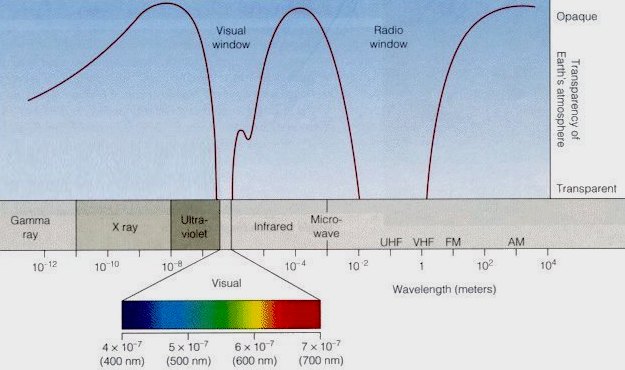Carmen Sundial Filter sunlamp
Transparancy of Earth's atmosphere
SUNRAYS
Light and warmth are our most direct observations
of the sun. Light is what we see, warmth (or infrared
radiation) is what feel and ultraviolet radiation is
something we can neither feel nor see but it is what
tans our skin. In 1873 James Clerk Maxwell proved
that light and infrared radiation are only small parts
of a more comprehensive system, the so called
electromagnetic spectrum. Based on some typical
characteristics this spectrum can be sub-divided in
electric waves, radio waves, micro waves, infrared
radiation, light, ultraviolet radiation, X-rays, gamma
radiation and cosmic radiation. Sunrays consist of a
combination of these rays with different
characteristics that can all be described in terms of
frequency or wavelength. Sunlamps produce a
combination of infrared radiation, light and ultraviolet
radiation as can clearly be seen by the image of the
Carmen Sundial Filter on display here.
The wavelength of electric waves is the longest with the lowest level of energy while
that of cosmic rays is the shortest with the highest level of energy. It are mainly the
high-energetic sunrays with wavelengths shorter than that of visible light that can be
harmful for the human body. Fortunately the atmosphere that surrounds the earth
prevents the greater part of this radiation from reaching the surface of our planet.
Only a part between infrared and ultraviolet, including light (the visual window) and a
part of the radio waves (the radio window) can penetrate the earth's atmosphere
more or less unhindered.

